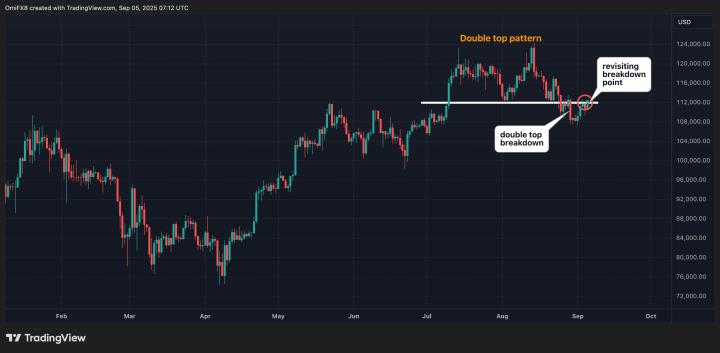A trillion-dollar market value will not be the end of DePIN , but it may become the starting point of development in a higher dimension, which is AI, intelligent civilization.
Written by: IoTeX
On the morning of July 17, Silicon Valley time, IoTeX released the 2.0 version of the white paper, officially starting a comprehensive upgrade. IoTeX was first created in 2017. After 7 years, the 2.0 version of IoTeX will upgrade from the Layer 1 public chain to the modular DePIN open platform. It is also the only ecosystem that currently supports the openness, modularization, and large-scale adoption of DePIN. The IoTeX 2.0 white paper shows the industry landscape leading to the large-scale adoption of DePIN. Technically, through modular infrastructure (DIMs), matching modular security pools (MSPs), and a new flywheel drive in the economic system, it has built a solid foundation for the trillion-dollar DePIN track.

IoTeX 2.0 Overall Architecture
Driven by the modular platform of IoTeX 2.0, architectures such as lightweight construction, cross-ecological collaboration, and DePIN Layer 2 are realized, and the development pattern of the DePIN track may be completely changed. This change enables the entire open ecosystem to have the ability to access more than 100 million devices in the next 3 to 5 years, and the overall network value of IoTeX will also achieve breakthrough growth.
“As a leader in infrastructure construction before the birth of the DePIN concept, IoTeX’s new upgrade will completely open up a high-speed channel to the trillion-dollar market,” said Raullen, CEO and co-founder of IoTeX. “We hope that developers, innovative builders, and visionary friends will join this journey of large-scale application of AI and DePIN, and jointly build a future where the physical and digital worlds are seamlessly integrated, creating unparalleled growth opportunities together.”
IoTeX 2.0: Building the DePIN Highway
From the IoTeX 2.0 white paper, we can see that the core goal of this upgrade is to construct a set of high-speed channels that can lower the construction threshold and increase the development speed of DePIN projects to accelerate the large-scale adoption of DePIN. It is also a comprehensive implementation plan for the IoTeX ecosystem to enter the fast lane of development. To this end, IoTeX has moved from a chain to a modular open platform. The original Layer 1 public chain has also become the basic layer of the entire modular architecture, and it has opened up the construction space for the DePIN basic module and Layer 2 on top of it.
From the perspective of technical architecture, IoTeX 2.0 is based on the nine core modules required for the development of DePIN. Through endogenous research and development and external cooperation, it constructs DePIN Infrastructure Modules (DIMs), including a unified trusted layer, identity recognition, and off-chain computing.
From the perspective of economic mechanism, IoTeX 2.0 integrates practicality and economic activities, applies the economic balance adjustment system of staking, re-staking, inflation and deflation to the functions of modular security pools and other DIMs, and establishes an effective incentive mechanism for the long-term development of the ecosystem.
In terms of ecosystem development, IoTeX 2.0 has also formulated specific implementation plans and incentive schemes. It will provide incentives for ecosystem construction in a decentralized, fair and open manner through MarshallDAO , and launch phased campaigns to attract more builders and users to join.
Modularity is the best solution for DePIN large-scale applications
The DePIN infrastructure module is the core of the technical architecture upgrade in the IoTeX 2.0 strategy, and it is also the IoTeX team’s 7-year exploration of the most efficient path for large-scale adoption of DePIN.
Unlike blockchain use cases for on-chain applications such as DeFi, NFT, Gamefi, etc., DePIN must interact with real-world smart devices that generate large amounts of data . The resulting large number of expansion layers of the DePIN technology stack may be difficult for a single team to develop in a holistic manner, and this complexity sets a high barrier to entry for builders to try innovative ideas in DePIN.
The DIM layer implemented in IoTeX 2.0 provides a modular approach that allows projects to build technology stacks that are tailored to their specific stage and needs. IoTeX’s core developers have developed state-of-the-art solutions for several key modules, which focus on DIM’s unified trust layer, hardware, identity, off-chain computing, L2 SDK, and public products.

In addition to the internal implementation provided by the IoTeX core development team, its modular strategy is also supported by many outstanding projects, including NEAR (data availability), Filecoin (storage), RISC Zero (secure zero-knowledge computing) and Espresso (sorter).
Modular Security Pools (MSP): A perfect match between technology and economy
The foundation of modularity is a unified, trusted layer, and IoTeX 2.0 has built a Modular Security Pool (MSP) for this purpose, which is a key part of DePIN modularity. It enables IoTeX L1 to lease the security of its proof of stake to DIM for security and trust, with IoTeX L1 and MSP acting together as the trust anchor and immutable ledger for all activities within the DIM layer, dApp, and L2 layer. Validators can earn incentives by re-staking their proof of stake (PoS) security to DIMs and DePIN projects, and provide security for the projects.
In simple terms, the participants of MSP are mainly DIM builders, stakers and validators. DIM builders can provide off-chain services, data storage, identity authentication and other modules, validators provide nodes to run these DIMs and provide services for the DePIN project, and stakers obtain incentive benefits for the above services by entrusting their assets to validators.
The operating mechanism of MSP has many similarities with Eigenlayer, but their technical implementation solutions and structures are different. As a trust layer natively integrated with the DePIN modular architecture, the DePIN project has more practical service requirements for DIM, which also means that the incentives provided by MSP will be richer. Currently, IOTX has a basic income of 6% to 11% in node staking, and with the application of MSP, the re-staking superposition income of the IOTX network may reach 20%.
Off-chain computing: the core of connecting real-world data
Unlike other purely chain-based ecosystems, extracting, calculating, and verifying off-chain data is a very core part of the DePIN project. The white paper of IoTeX 2.0 shows the core module W3bstream that solves one of the important problems of off-chain computing. W3bstream is a decentralized off-chain computing network composed of heterogeneous nodes that perform verifiable calculations. W3bstream is able to compress large amounts of off-chain data into verifiable ZK-proofs, thereby triggering on-chain transactions. The main components include sovereign smart devices, data availability layer, decentralized sequential network (DSN), decentralized aggregation network, and Layer 1 network.
In actual development, different projects have different requirements for proof mechanisms. W3bstream can accommodate four types of proof mechanisms through a carefully designed middleware layer to achieve verifiable computing of DePIN applications, namely zero-knowledge (ZKP) proof, trusted execution environment (TEE) proof, secure multi-party computing (SMPC) proof mechanism, and bring your own proof (BYOP). Developers can choose a more efficient and lower-cost method to meet the needs of off-chain computing as needed.
With the support of modules such as W3bstream, the dynamic data of thousands of DePIN networks can be uploaded to the chain. DePINscan, which includes more than 200 DePIN projects, connects to more than 17 million devices, and covers projects with a market value of more than 24 billion US dollars, is an AI and DePIN data center built on W3bstream. It can be said to be the DeFiLlama in the DePIN field.

DePIN device map of DePINscan platform
Looking further, based on large-scale decentralized verifiable real data, IoTeX has built the most promising open source data platform for the data layer, one of the three pillars of AI development. This platform will become the neuron of super intelligence, providing a decentralized and democratic foundation for the intelligent leap of human civilization.
Upgrading the economic system: creating a healthy positive flywheel
As can be seen in the IoTeX 2.0 white paper, the new economic system mainly includes the following upgrades:
New use cases: IOTX will be used across the entire IoTeX 2.0 infrastructure, including network validation staking, governance participation, and gas fee payments for the Layer 1 network.
Balancing inflation and deflation: IoTeX 2.0 introduces inflationary staking rewards to incentivize network security, as well as deflationary mechanisms triggered by network usage, such as burning gas fees (similar to Ethereum’s EIP-1559) and creating device identities (ioIDs) and obtaining verifiable credentials.
Modularity Rewards: The growth of DePIN Infrastructure Modules (DIMs) such as W3bstream and ioConnect will drive the destruction of IOTX when devices interact with these services.
Incentivizing builders: The token economics of IoTeX 2.0 will distribute IOTX to builders through a growth incentive program to promote the continued development of the IoTeX platform.

IoTeX 2.0 Economic System
Combined with the above mechanisms, IoTeX 2.0 actually creates an economic positive flywheel structure. First, through node staking and MSP re-staking, the basic income of IOTX on the native network can form a healthy superposition, which will help the active operation of network nodes and the overall security. Secondly, the practicality achieved in L1 and each DIM layer will consume IOTX. The more projects and DIMs added, the more IOTX will be deflated.
Overall, user growth will bring more devices and Dapps, and more Dapps will attract more users, thus forming a virtuous circle. In order to enhance this flywheel, IoTeX 2.0 launched Marshall DAO, which uses IOTX as an incentive to attract new users, devices, and Dapps, thereby accelerating the flywheel and ultimately generating more utility and value for IOTX in the future. As a result, IoTeX 2.0 has sufficient power to lead the way to a trillion-dollar market.
The Singularity of Trillion DePINs: Towards an Intelligent Civilization
At the end of the white paper, IoTeX presented its 2.0 construction roadmap. We can see that the W3bstream testnet has been deployed, the 1000TPS network upgrade has been completed, and core modules such as the identity authentication layer ioID and MSP v1 will be launched in Q3. In the near future, the most noteworthy ones are IoTeX's upcoming DeFi4DePIN event and the launch of the ecological incentive Marshall DAO and Launchpad. Combined with the $50 million financing completed by IoTeX in Q2, what kind of ecological growth plan IoTeX will launch is very worth looking forward to.
The white paper of IoTeX 2.0 points out a highway to the trillion-dollar market of DePIN. As a decentralized public infrastructure, DePIN has a development potential that is even higher than decentralized financial infrastructure. In the future, it will become one of the most important directions in the development of Web3 technology and spirit. The trillion-dollar market value will not be the end of DePIN, but it may become the starting point of a higher-dimensional development, which is AI, intelligent civilization.
We have been evolving and developing in the alternation of quantitative and qualitative singularities, and IoTeX 2.0 has made structural preparations for the arrival of the intelligent society singularity to accumulate huge amounts of data. IoTeX 2.0 envisions a future where large amounts of real-world real-time data can be collected, verifiably processed, and analyzed to form a more efficient data processing system, ultimately achieving super-intelligent AI, which will completely change human intelligence and decision-making processes.
In the future, IoTeX 2.0 aims to become the largest decentralized hub for devices and data, with tens of thousands of DePIN networks connecting hundreds of millions of devices. These aggregated data will become the basis for cultivating and training the most advanced AI brains, bringing immeasurable value to the new world.








